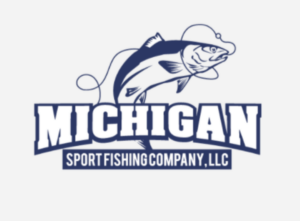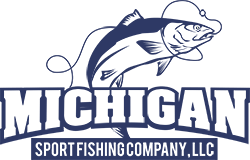
Manistee Fishing Charters
As a fishing enthusiast, there’s nothing more thrilling than embarking on a Manistee Fishing charters to explore the waters of Lake Michigan. The expansive and beautiful lake is home to various species of fish, making it an angler’s paradise. Imagine the excitement of spending a day on the water, surrounded by the stunning scenery, and sharing stories with fellow anglers as you reel in your catch. In this post, we’ll introduce you to five fish species you’re likely to encounter on Manistee fishing charters in Lake Michigan. So, gather your gear and prepare for an unforgettable fishing adventure!
Manistee, a popular fishing destination in Michigan, is known for its abundance of salmon and trout species. The town’s prime location along the Manistee River and Lake Michigan provides excellent fishing opportunities, drawing anglers from all over the world. Manistee Fishing Charters offer guided trips and access to prime fishing spots to help you land these prized catches.
Without further ado, let’s dive into the five fish species you might catch on a Manistee fishing charter in Lake Michigan. We’ll discuss each species’ characteristics, preferred habitats, and tips for catching them. Keep this information in mind as you prepare for your next fishing adventure!
Lake Trout

Lake Trout, also known as “lakers,” are the largest trout species found in Lake Michigan. They have a distinct, elongated body with a deeply forked tail and a speckled, silvery-gray coloration. Lake trout prefer cold, deep waters and are often found at depths of 60-200 feet during the summer months. In the spring and fall, they move to shallower waters to feed and spawn.
As a native species to Lake Michigan, lake trout play a vital role in the ecosystem. They primarily feed on smaller fish, such as alewives, smelt and gobies, and occasionally on other trout and salmon species. Lake trout are known for their slow growth, taking several years to reach maturity, and their ability to live for many decades.
When fishing for lake trout, consider using downriggers to reach the deeper waters they inhabit. Lakers are often found near underwater structures, such as reefs and drop-offs, so focus your efforts in these areas. Trolling with spoons or spinners is a popular technique for Targeting Lake Trout, as it mimics the swimming motion of their prey.
Chinook Salmon (King Salmon)

Chinook Salmon, also known as king salmon, are the largest and most sought-after salmon species in Lake Michigan. They are characterized by their large size, silver coloration, and black spots on their back and tail. Chinook Salmon can weigh up to 40 pounds, making them an exciting catch for any angler.
King salmon are not native to Lake Michigan but were introduced in the 1960s to control the alewife population. They have since become a popular sport fish, attracting many anglers to the area. Chinook salmon inhabit various depths, depending on the season and water temperature, with a preference for waters around 50°F. They often inhabit deeper waters during the summer months and move closer to the shore during the spring and fall.
When targeting Chinook salmon, troll with spoons, plugs, or flasher-fly combinations. Downriggers can be used to reach the proper depth, and attractants such as herring oil can be added to your lures to entice these fish. Pay attention to water temperature as Chinook salmon are known to be temperature-sensitive, so finding the right depth with the preferred temperature is crucial to a successful catch.
Coho Salmon (Silver Salmon)

Coho Salmon, also known as silver salmon, are a smaller salmon species found in Lake Michigan. They have a sleek, silver body with small black spots on their back and upper tail. Coho salmon typically weigh between 3-15 pounds, making them a smaller but still exciting catch for anglers.
Like Chinook salmon, coho salmon were introduced to Lake Michigan in the 1960s and have since become a popular sport fish. They inhabit various depths, depending on the season and water temperature. Coho salmon often move closer to the shoreline during the spring and fall, with a preference for water temperatures around 53°F.
When targeting coho salmon, troll with smaller spoons, spinners, or plugs. Downriggers can be used to reach the proper depth, and using planer boards to spread your lines can help cover a larger area. Pay attention to water temperature and depth, as finding the right conditions will increase your chances of success.
Steelhead (Lake Run Rainbow Trout)

Steelhead, also known as lake run rainbow trout, are a migratory trout species that inhabit both Lake Michigan and its tributaries. They have a silver body with a pinkish-purple stripe along their side and a speckled tail. Steelhead are known for their acrobatics and fighting ability, making them a favorite among anglers.
Steelhead enter the tributaries of Lake Michigan to spawn during the spring and fall months. They can be found in various depths in the lake, depending on the season and water temperature. Steelhead often prefer water temperatures below 50°F and can be found in both shallow and deep waters throughout the year.
When targeting steelhead in Lake Michigan, troll with spoons, spinners, or plugs, focusing on the preferred water temperature. Downriggers and planer boards can be used to reach the proper depth and spread your lines. Steelhead are known for their aggressive strikes, so be prepared for an exciting battle once you hook one of these fish.
Brown Trout

Brown Trout are a popular sport fish in Lake Michigan due to their beautiful coloration and challenging fight. They have a golden-brown body with black and red spots along their sides. Brown trout can grow quite large, with some individuals weighing over 20 pounds.
Although brown trout are native to Europe, they have adapted well to Lake Michigan and its tributaries. They can be found in various depths and habitats, depending on the season and water temperature. Brown trout often inhabit shallow waters near the shoreline, especially during the spring and fall months.
When targeting brown trout in Lake Michigan, troll near the shoreline with spoons, spinners, or stickbaits. Focus on areas with underwater structures, such as rocks, reefs, or drop-offs, as brown trout are known to be structure-oriented fish. Brown trout can be caught throughout the day, but they are often more active during low light conditions, such as dawn and dusk.
Conclusion
With an abundance of diverse fish species, Lake Michigan offers an unparalleled fishing experience for anglers of all skill levels. Manistee fishing charters provide an excellent opportunity to explore these waters and target these exciting fish species. Whether you’re a seasoned angler or a newcomer to the sport, a Manistee fishing charter will undoubtedly provide you with memories that will last a lifetime. So gear up, gather your fellow fishing enthusiasts, and embark on an unforgettable adventure in the waters of Lake Michigan!
Call Captain John and book your Manistee Fishing Chsarter today!

www.michigansportfishing.com
- Informational
- April 25, 2025





